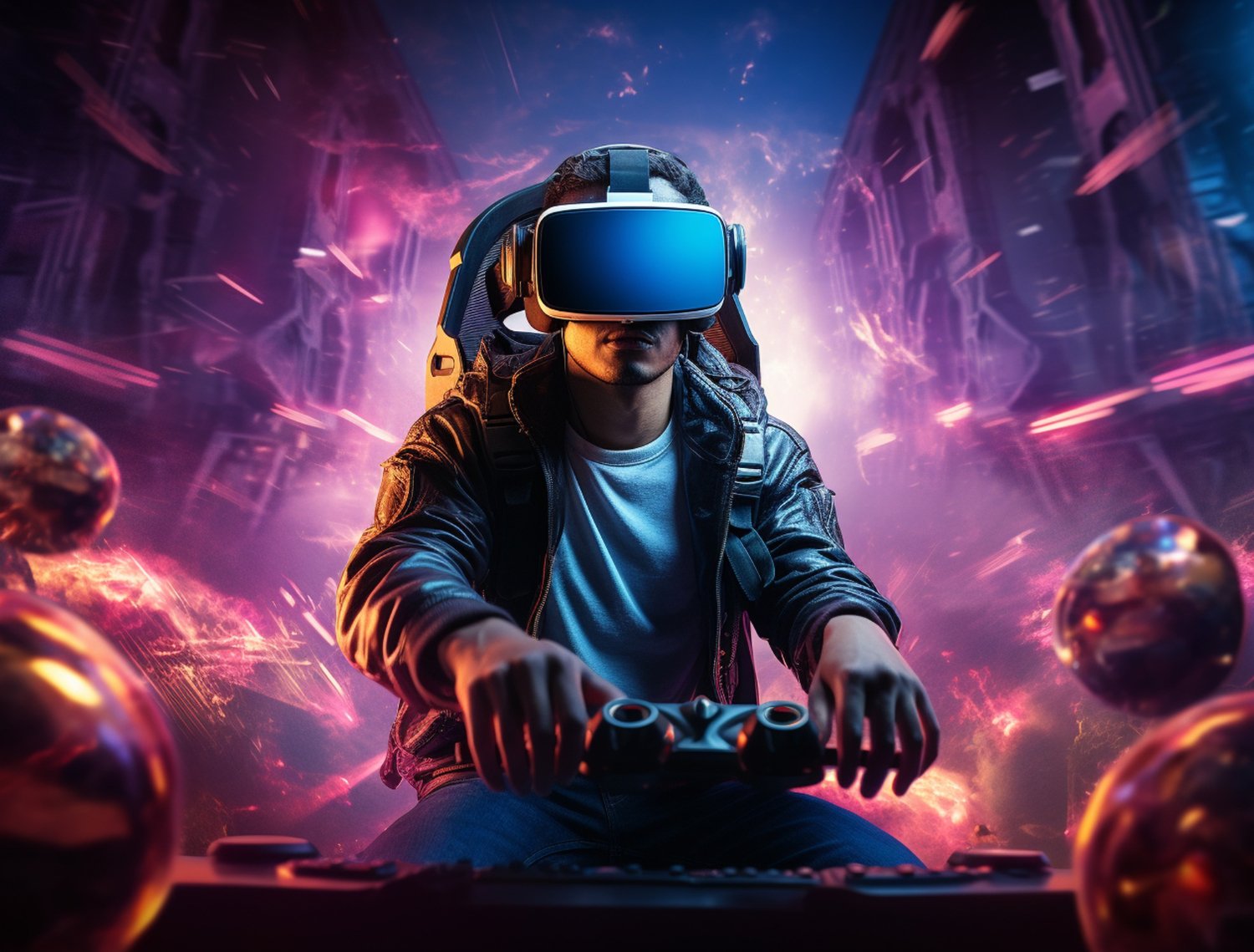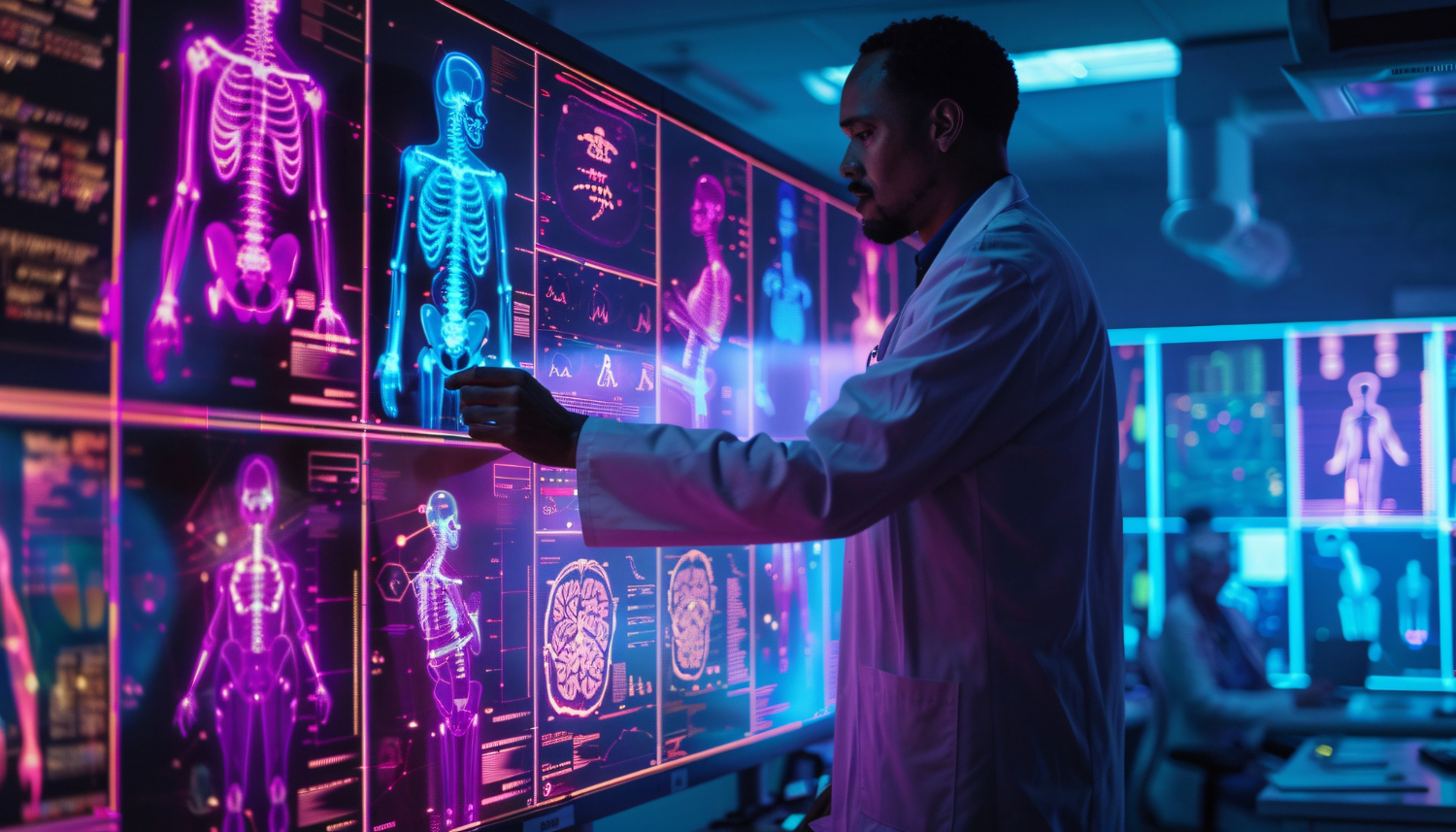Generative AI is transforming the way video games are created, offering new possibilities that were previously unimaginable. This type of artificial intelligence has the ability to create vast, dynamic worlds and realistic in-game content, all with the help of machine learning models. Video game developers are using generative AI models to bring new levels of immersion and interactivity to players, pushing the boundaries of creativity and innovation.
The core concept of generative AI lies in its ability to create realistic game environments, characters, and even stories. It learns from large datasets (known as training data) and produces outputs that can vary from game textures to dialogue systems. Let’s dive into the ways generative AI is shaping video games and how it’s being applied across different aspects of game development.
What is Generative AI in Video Games?
Generative AI refers to AI systems that can generate new content, often based on data they’ve been trained on. In video games, it can create anything from images and 3D models to dialogue and music. By learning patterns and structures from large amounts of data, generative AI tools can produce content that feels organic and responsive to the player’s actions.
Popular generative AI models like Generative Adversarial Networks (GANs) and large language models (LLMs) play a big role in this transformation. These machine learning models allow games to evolve and react based on player input, creating more dynamic experiences.
How Generative AI Enhances Game Content
Procedural World Generation
One of the most exciting applications of generative AI in gaming is procedural world generation. Rather than manually designing each level or environment, developers can use generative AI to create vast, complex worlds that players can explore. The AI can generate landscapes, cities, forests, and even underground caves on the fly, ensuring no two experiences are the same.
Games like No Man’s Sky have used generative AI to create nearly infinite worlds, each with unique characteristics. This method saves game developers time and resources, as the AI handles much of the world-building. It also enhances player engagement by providing endless exploration opportunities.
Character and Asset Creation
Generating content such as characters and in-game assets is another major application of generative AI in video games. Instead of manually crafting each NPC (non-player character), game designers can rely on AI models to generate them with realistic appearances and behaviours.
For instance, using a generative adversarial network, developers can create NPCs that look and act differently each time. The AI can alter their facial features, clothing, and even their personalities. Players enjoy interacting with more lifelike and diverse characters, making the game feel richer.
Dynamic Storytelling and Dialogue
One of the most impressive aspects of generative AI is its ability to create interactive dialogue and storytelling. By using natural language processing (NLP), games can offer characters that respond in real time to players’ choices.
Large language models enable NPCs to understand and respond to human languages. As a result, the player’s dialogue choices influence the direction of the story. In some games, this leads to multiple branching narratives that are shaped by player input, making each playthrough unique.
This approach has also been applied in customer service for gaming companies. Instead of pre-scripted responses, chatbots can use conversational AI to provide more helpful and personalised answers to player questions.
Creating Realistic Environments
Generative AI models can also generate detailed game environments that look realistic and immersive. By learning from photos and videos, the AI can replicate natural environments like forests, mountains, and cities in the game world. This method creates visually stunning landscapes and saves developers from manually designing every detail.
Generative AI can go even further by adjusting lighting, shadows, and textures in real time. This increases the game’s overall aesthetic quality and makes it more engaging for players. For example, an image generated by AI can adapt to weather conditions like rain or snow, creating a sense of realism.
The Role of Generative AI Tools in Game Development
Game developers are increasingly relying on generative AI tools to speed up the development process. These tools have the ability to automate tedious tasks, allowing developers to focus on creating innovative gameplay mechanics and narratives.
AI-Driven Animation
Generative AI models can help automate animation tasks, especially for creating realistic character movements. Instead of manually animating each step, developers can use AI systems to predict how characters should move in various situations, making their movements feel more natural.
AI-Generated Music and Sound
Audio is a crucial part of the gaming experience. Generative AI models can be trained to create dynamic soundscapes and music that adapt to the player’s actions. For instance, when a player enters a tense situation, the AI can generate a fitting soundtrack in real time to heighten the mood.
Enhanced Graphics with AI
Ray tracing technology has been enhanced through AI to create more realistic lighting and shadow effects in video games. Generative AI can simulate how light interacts with different surfaces, creating stunning visuals with less computing power than traditional rendering techniques.
Training Data for Machine Learning Models
Training data is essential for machine learning models to function. In video game development, training data can come from a variety of sources such as player interactions, environmental textures, and real-world images. By feeding the AI with diverse datasets, developers can improve the quality and realism of the generated content.
Challenges of Implementing Generative AI in Video Games
While generative AI brings exciting opportunities, there are also challenges that developers must consider:
Computing Power
Training generative AI models requires immense computing power. Rendering realistic graphics, creating dynamic worlds, and generating high-quality dialogue can demand more processing resources than many systems can handle. This can slow down development or require specialised hardware like GPUs to ensure smooth performance.
AI System Limitations
Even the most advanced AI systems have limitations. Generative AI can sometimes create content that lacks coherence or realism, especially when dealing with complex scenarios. Ensuring that the AI’s output matches the desired level of quality requires ongoing adjustments and human oversight.
Balancing Creativity and Automation
While AI can generate content, it can’t replicate human creativity. Game developers must find the right balance between automation and manual design to ensure the game remains engaging and fun for players.
Ethical Considerations
As generative AI becomes more prevalent in games, ethical questions arise about how AI-generated content affects the player experience. For example, should players always know if they are interacting with AI-generated characters or environments? Game designers need to consider these issues as they incorporate AI into their projects.
Future Prospects for Generative AI in Video Games
The future of generative AI in gaming holds immense promise. As AI technology advances, we can expect even more realistic and interactive game environments. Large language models will continue to improve, making in-game dialogue more responsive and engaging. AI systems will generate increasingly complex narratives, allowing for branching storylines that adapt to each player’s decisions.
Generative AI tools will also become more accessible to smaller game studios, allowing them to compete with larger developers. This will lead to a more diverse gaming landscape, with indie developers creating unique, AI-driven experiences.
Generative AI has already proven its value in video games, but we are only scratching the surface. As AI continues to evolve, the gaming industry will see new opportunities for creativity, interactivity, and immersion.
The Limits of Generative AI and the Need for Human Intelligence
While generative AI is capable of producing highly realistic and dynamic content, it cannot fully replace the role of human intelligence in the creative process. There are several areas where human insight is crucial to ensuring that AI-generated content aligns with the game’s overall design and vision.
Creative Direction and Storytelling
Although generative AI models, such as large language models, are becoming better at generating dialogue and storylines, they still lack a deep understanding of context, emotion, and creativity. AI can generate vast amounts of text and content, but it requires human oversight to shape these elements into meaningful stories that resonate with players.
For example, when a game developer uses generative AI to create dialogue between characters, the AI may be able to generate natural language, but it often lacks the nuance and emotional depth that human writers can provide. It’s up to human developers to edit and refine AI-generated dialogue so that it fits the game’s tone, theme, and overall story arc.
Game Design and User Experience
Game design is a complex process that involves more than just generating content. Designers must consider how the content will interact with gameplay mechanics, player progression, and the overall user experience. While AI can assist in generating assets or environments, it cannot fully understand the impact of these elements on the player’s experience. Human intelligence plays a critical role in determining how AI-generated content will fit into the larger game structure.
For instance, generative AI can create sprawling, procedurally generated landscapes. However, it is up to human designers to ensure these landscapes are fun and interesting to explore. They must think about how players will interact with the environment, where key gameplay elements are placed, and how the generated content aligns with the game’s objectives.
Ethical Considerations and Narrative Coherence
As generative AI tools continue to improve, developers must also consider ethical questions. Should players always know whether they are interacting with AI-generated content? How does generative AI affect player immersion and engagement? Human intelligence is essential in addressing these questions and ensuring that AI-driven content enhances the gaming experience rather than detracting from it.
Ethical considerations also come into play when designing the narratives and characters that AI helps generate. AI may not be able to fully grasp cultural nuances or ethical dilemmas, meaning human designers must carefully review AI-generated content to ensure it aligns with the game’s narrative goals and values.
The Role of Human Intelligence and Generative AI in Video Games
Generative AI has become an exciting and transformative force in video games. From creating immersive worlds to developing realistic characters, AI’s ability to generate content is pushing the boundaries of what games can be. However, as impressive as generative AI is, it does not function in isolation. Human intelligence remains a key component in making AI-driven content work seamlessly in video games.
While AI systems can generate content such as textures, characters, or even dialogue, they still require guidance from human developers and designers. The human touch ensures that the content is engaging, meaningful, and serves the overall game design and narrative. Balancing human intelligence with generative AI can result in richer and more dynamic gaming experiences.
This collaboration between human and AI intelligence is especially important as generative AI continues to evolve. As we look forward to the future of gaming, institutions like Stanford University are also exploring the intersection between AI and human creativity. Research from Stanford provides valuable insights into how we can further integrate AI systems with human input to create better, more intelligent video games.
The Contributions of Stanford University to AI and Gaming
Stanford University is one of the leading institutions in AI research, contributing significantly to our understanding of AI’s potential in various fields, including video games. The university’s AI labs have produced cutting-edge research on AI models, machine learning, and natural language processing (NLP), helping to advance the technologies that are now being used in video game development.
AI Research for Games
Stanford’s AI research has explored various aspects of AI’s role in games, from procedural generation to dynamic storytelling. One area where Stanford researchers have made significant contributions is in the development of large language models, which are key to AI’s ability to generate dialogue and narratives in games. These models, trained on massive datasets, are designed to understand and produce human language, making them ideal for creating more interactive and responsive game characters.
Moreover, Stanford’s research into machine learning models has improved the way AI systems learn from training data. This allows generative AI tools to generate more complex and accurate content, whether it’s 3D environments, character animations, or realistic soundscapes. The use of advanced machine learning models is a direct result of this research, and it is now applied in popular generative AI tools used in gaming.
Collaboration Between AI and Human Intelligence
Stanford’s AI researchers are not just focused on how AI can function independently, but also how AI can work alongside human intelligence. Their research emphasises the importance of human oversight in AI-driven systems, which is particularly relevant in video games. They propose frameworks where AI can augment human creativity, making the development process more efficient while retaining the critical elements of human insight and creativity.
For instance, while AI can generate the skeleton of a game’s world or dialogue, human developers at Stanford stress the importance of refining this output to ensure it aligns with the game’s vision. This collaboration results in games that are both AI-driven and human-centric, offering a balance between innovation and meaningful design.
Pioneering AI Systems for Real-Time Interactivity
Stanford University has also contributed to the development of AI systems that allow for real-time interactivity in games. Real-time content generation is one of the most exciting applications of generative AI in video games. Instead of pre-programmed events or environments, AI systems generate content on the fly based on player inputs. This adds a layer of unpredictability and excitement to gameplay.
By incorporating real-time AI systems into video games, developers can create dynamic experiences where the game world reacts to the player’s decisions in real time. For example, AI systems can alter the game’s environment or storyline based on the player’s choices, creating a more personalised experience. Stanford’s research into real-time AI systems is helping push this capability forward, offering new possibilities for game developers and players alike.
The Future of Generative AI and Human Intelligence in Gaming
As generative AI continues to develop, its integration with human intelligence will become even more essential. While AI can generate vast amounts of content, it still lacks the creativity, emotional depth, and ethical awareness that human intelligence brings. By combining the strengths of both AI and human creativity, game developers can create more immersive and engaging gaming experiences.
AI-Assisted Game Design
In the future, we may see even more AI-assisted game design tools that allow developers to quickly generate complex environments, characters, and narratives. However, human designers will remain crucial in shaping and refining this content to ensure it fits the game’s vision. The collaboration between human and AI intelligence will allow developers to work more efficiently while maintaining the creative integrity of their games.
Ethical AI in Games
As AI continues to play a larger role in gaming, developers will need to consider the ethical implications of using AI-generated content. Should players always know if they’re interacting with an AI-generated character? How can we ensure that AI-driven content is culturally sensitive and ethically sound? These are questions that will require ongoing collaboration between AI researchers and human developers to address.
Expanding the Scope of Generative AI
With advancements in AI research, particularly from institutions like Stanford University, the potential applications of generative AI in video games will only grow. In the coming years, we can expect to see more games that use AI to create real-time content, offer dynamic storytelling, and generate more immersive and responsive game worlds.
TechnoLynx: Your Partner in Generative AI for Games
At TechnoLynx, we specialise in developing cutting-edge generative AI solutions. Our AI expertise enables us to craft bespoke solutions that meet the unique needs of each project.
Our team is skilled in using machine learning models and generative adversarial networks to produce dynamic, AI-driven content. Whether it’s creating lifelike characters, generating immersive worlds, or building interactive dialogue systems, we have the knowledge and tools to bring your game to life.
If you’re looking to incorporate generative AI into your video game development, TechnoLynx can help. Our AI solutions are designed to push the boundaries of what’s possible, allowing you to create innovative and immersive gaming experiences that captivate players.
At TechnoLynx, we understand the balance between generative AI and human intelligence in video games. Our team has extensive experience working with AI systems, machine learning models, and natural language processing (NLP) to create dynamic, AI-driven content for video games. We can help your game development team incorporate AI to generate realistic environments, characters, and dialogue while ensuring that the creative vision and player experience remain intact.
Whether you’re looking to use AI for procedural generation, real-time content creation, or dynamic storytelling, TechnoLynx can help you bring your vision to life.
Continue reading: Level Up Your Gaming Experience with AI and AR/VR
Image credits: Freepik













